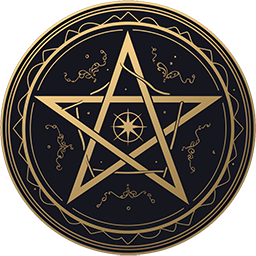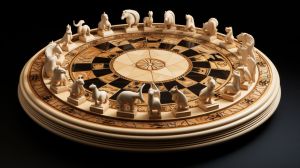Zodiac Chess
Zodiac chess was a game played by students at the Greannmhar School of Magic. While it's a beloved game among witches and wizards, its complicated rules mean it is not a game for everyone.
Origin and History
Zodiac chess, an ancient game steeped in magical tradition, has puzzled historians and magical scholars alike. Believed to have evolved from astrological practices in the 10th century, the game seamlessly blends strategy, chance, and the mystical elements of the zodiac. Its origins are shrouded in mystery, with some theories suggesting that it was first played by a secretive coven of astrologer-witches. Over the centuries, zodiac chess has evolved, integrating various magical and astrological elements, making it a favored pastime among witches and wizards.
Cultural Significance
Zodiac chess is more than a game; it is a form of divination and a celebration of astrological knowledge. It is often played during significant celestial events, like eclipses or solstices, and is believed to enhance the players' magical abilities and astrological insight. The game is especially popular at magical academies and is used as a teaching tool for young witches and wizards to learn about the zodiac, strategy, and the interplay between magic and the cosmos.
Strategic Complexity
The goal is to strategically navigate the board to align your pieces in a formation that represents a powerful astrological aspect, such as a Grand Trine or Grand Cross, based on the current astrological transits.
Rules
Board
Unlike traditional chess, zodiac chess is played on a circular board divided into concentric rings, each ring containing an equal number of alternating black and white spaces. The amount of rings can vary, depending on the edition of the game. The center of the board represents the celestial pole.
Pieces
The rules for zodiac chess are complicated. Each player has 13 pieces, one for each zodiac: Aries, Taurus, Gemini, Cancer, Leo, Virgo, Libra, Scorpio, Ophiuchus, Sagittarius, Capricorn, Aquarius and Pisces.
Each zodiac piece possesses unique radial movement capabilities, which allow them to move towards or away from the board's center. These movements are based on the attributes of their respective zodiac signs. For example:
- Aries, a sign known for its boldness, can move aggressively across multiple radial spaces towards the center to engage quickly.
- Capricorn has the ability to move backward, symbolising its cautious and calculated approach.
- Libra has the ability to move radially with balance, able to position itself stragegically to either advance or retreat with equal ease.
- Sagittarius can leap forward several spaces, reflecting its adventurous and far-reaching nature.
- Ophiuchus' movement is determined by the opponent's ascendent in relation to one's own ascendent. As most people are not aware of their ascendent, players usually determine the movement of their Ophiuchus by dice throws.
Pieces also have properties that can make certain moves and actions more challenging. For example:
- Cancer has a habit of pinching players. It is thus typically only moved when absolutely necessary.
- Scorpio is able to sting adjacent pieces, temporarily immobilizing them.
- Virgo tends to produce an ear-piercing scream when the piece is taken. Taking the piece is thus generally avoided.
Orbit
In addition to its unique board and piece characteristics, Zodiac Chess incorporates a distinctive continuous motion mechanic. Each piece on the board moves automatically in a counter-clockwise direction, advancing at least one field along the circular track with each turn. This constant movement is referred to as "Orbit". It symbolizes the relentless march of the celestial bodies across the sky and adds a dynamic layer to the game's strategy.
The constant counter-clockwise movement of each piece after every turn challenges players to think ahead and plan their strategies in accordance with both the automatic and player-initiated movements of their pieces.
The combination of continuous motion, radial, and circular dynamics demands a high level of strategic planning and foresight. Players must consider not only where a piece will move on their turn but also where it will shift automatically on subsequent turns. This constant motion represents the unceasing flow of time and celestial movements, making the game a deeply engaging and ever-evolving challenge.
Game Objective
The goal is to strategically navigate the board to align your pieces in a formation that represents a powerful astrological aspect, such as a Grand Trine or Grand Cross, based on the current astrological transits. The added layer of constant motion makes this objective complex and intriguing. Players must use their understanding of both astrology and the unique movement patterns of the pieces to anticipate changes and adapt their strategies in real-time.
Trivia
- Lycia Wintergale tried to learn the game in her first year at Greannmhar, but lost interest after Cancer pinched her finger several times.

